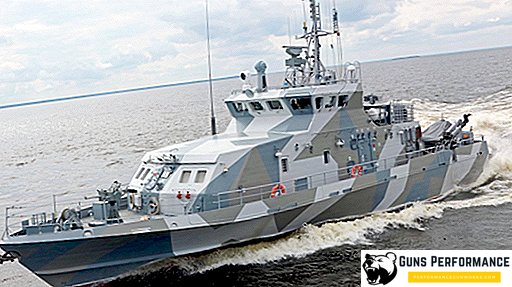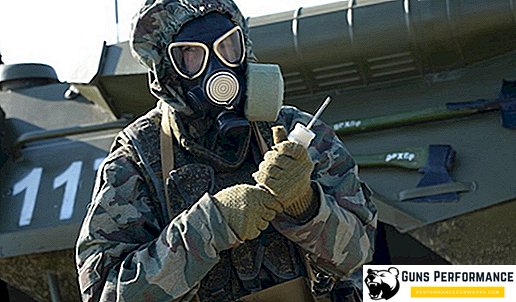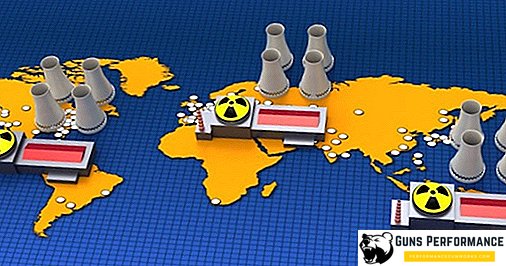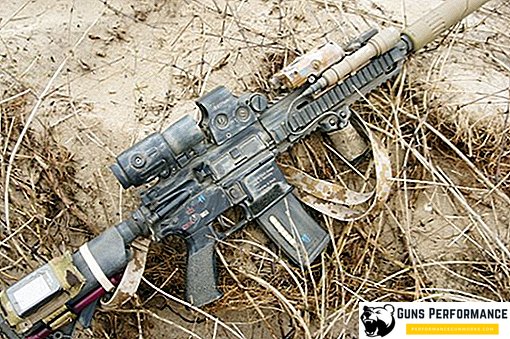One of the most famous seaplanes of the Soviet Union is the A-40 Albatross (aka Be-42). This is a multipurpose amphibian aircraft created by the Taganrog Aviation Scientific-Technical Complex (TANTK) named after. Beriev and planned as a replacement for the Be-12 seaplane. NATO code designation: "Mermaid" ("Mermaid").
Structurally, the aircraft A-40 is a vysokoplan. Moderate wing sweep. The tail of the aircraft is T-shaped. In fact, the A-40 is a "flying boat" due to the hull design, which allows it to stay afloat. Also for operation from sushi A-40 has a chassis with three racks; for operation from water surfaces the aircraft has special floats installed under the wing. Thanks to the rudder mounted in the tail of the aircraft, the Albatross has good stability on the water.
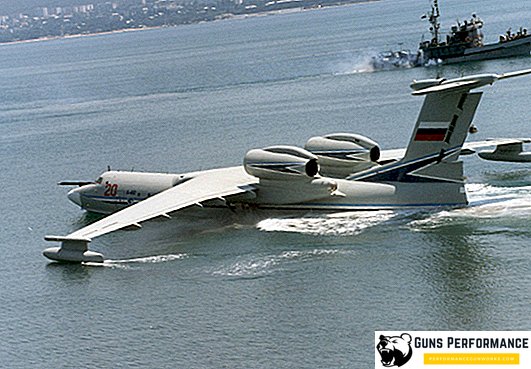
Flight performance of the A-40 "Albatross" amphibious aircraft:
- Crew: 4-8 people
- Length: 45.70 m
- Wing Span: 42.50 m
- Height: 11.07 m
- Wing area: 200 m²
- Weight empty: 44,000 kg
- Weight curb: 51,000 kg
- Normal take-off weight: 86,000 kg
- Maximum take-off weight: 90,000 kg
- Weight of payload: 10,000 kg
- Fuel weight: 35,000 kg
- Engines:
- basic: 2 × TRDD D-30TKPV
- takeoff: 2 × TRD RD-60K
- Traction:
- basic: 2 × 117.68 kN
- take-off: 2 × 24.52 kN
- Maximum speed: 800 km / h
- Cruising speed: 720 km / h
- Practical range: 4,000 km
- Ferry range: 5 500 km
- Duration of patrol: 12 hours
- Practical ceiling: 13,000 m
- Operational altitude: 8,000 m
- Run length: 1000/2000 m (land / water)
- Mileage: 700/900 m (land / water)
- Wing load: 430 kg / m²
- Aerodynamic quality: 16-17
- Seaworthiness (wave height): 2.2 m
- Armament:
- Combat load: 6,500 kg of various weapons:
- hydroacoustic buoys, depth bombs, mines
- 3 torpedoes "Orlan" or
- 4 "Kite" or
- 4 APR-2 "Hawk" anti-submarine missiles or
- 6 torpedoes APR-3 "Eagle"
The history of the creation and operation of the A-40 Albatross
Development of the amphibian A-40 (or Be-42) "Albatross" began in 1972, when the designer TANTK them. Beriev (at that time it was TMZ - Taganrog Machine-Building Plant) began work on the creation of a seaplane that could replace the Be-12. However, at this time in the leadership of the Armed Forces of the USSR and the fleet began a conflict of opinion. Thus, part of the military leaders argued that the fleet needed seaplanes because of their features, allowing them to perform specific tasks. Another part of the military believed that all tasks assigned to amphibious aircraft could also be successfully carried out by ground-based aircraft (for example, the long-range anti-submarine Tu-142).
However, as a result of the stubborn struggle of the designers and engineers of the TANTK them. Beriev for the future of the aircraft, called product "B", the development of the model continued. Only in 1983, the working drawings of the new A-40 (Be-42) seaplane were transferred to the manufacturer, and the first aircraft was laid down.
In September 1986, the first amphibious aircraft A-40 (called the product "B1") was withdrawn from the workshop. In the same year, tests of the new model began, and on December 8, the A-40 made its first flight. It should be noted that the first flight of the aircraft from the water surface was carried out only almost a year later - in early November 1987. However, the take-off of the aircraft from the water showed the longitudinal instability of the hull, in connection with which the designer in an emergency order began work to eliminate the problem. Another reason why A-40 (Be-42) flights from the water were stopped until the spring of 1988 was because the Gulf of Taganrog froze for winter. Thanks to the operational and productive work of Soviet engineers, on tests from the water in 1988, the aircraft showed better stability and controllability.

The first "public" appearance of the A-40 amphibious aircraft occurred in 1989 at an exhibition in Tushino. Was made and the flight of the machine, demonstrating its flight qualities. The second sample of the A-40 "Albatross" was released at the end of the same 1989 and immediately transferred for testing. In 1991, the A-40 (Be-42) "Albatross" was first shown abroad. So, at the air show in Le Bourget, the seaplane literally “blew up” the public, causing great interest and excitement.
Everything changed in 1992. After the collapse of the Soviet Union, the development of the A-40 was discontinued, and NATO member countries became interested in aircraft. This interest is easy to explain - in fact, the hydroplane had almost no analogues in the world and was considered the best in its class. Nevertheless, it was repeatedly announced that work on the project would continue. In fact, nothing has changed.
Only in 2012, it was announced the closure of the project. It seemed that the history of the A-40 (Be-42) was over, but the year 2018 brought new news: by 2020 it is planned to completely replace the fleet of Be-12 amphibians with the new A-40 Albatross. Rearmament dragged on for almost 50 years.
Advantages and disadvantages of the A-40 "Albatross"
The main advantage of the A-40 as a seaplane is the convenient location of its wing (high-wing), as well as the availability of all the necessary equipment for operation not only from land (a three-rack chassis), but also from water (floats and water-steering). "Children's" diseases in the design and equipment of the aircraft were actually eliminated during the tests in the second half of the 80s.

Nevertheless, due to almost 20 years of inactivity, designers will have to once again master the production of this complex machine, study its problems and features, which can not but affect the pace of aircraft production, especially in the coming years. However, this is not a drawback of a machine, but of political decisions taken in the 90s.
Conclusion
To date, the A-40 Albatross is one of the most promising domestic models of amphibian aircraft. Its flight performance is still at the level of world standards, not to mention the distant 80s of the twentieth century, when this aircraft was truly a breakthrough. It is safe to say that the A-40 (Be-42) “Albatross” hydroplane is truly the pride of the domestic aircraft industry.


